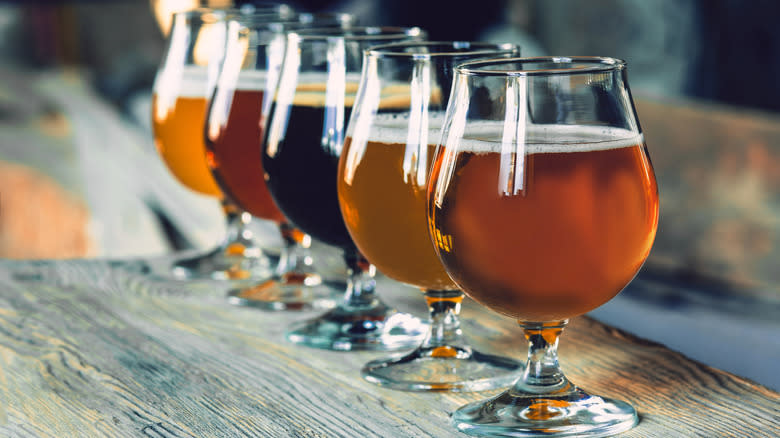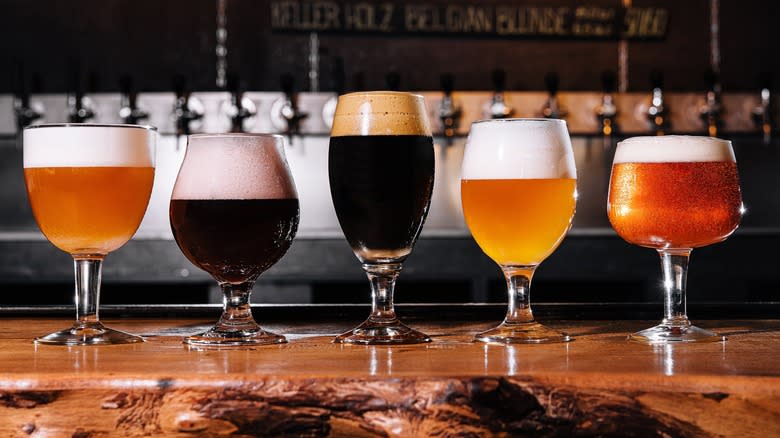An Expert Explains Why You Should Think Twice Before Mixing Beers

When whipping up cocktails, it's not unusual to use two kinds of spirits to complete the drink. An elderflower pear martini, for example, gets its signature flavor from a combination of vodka and St. Germain. Beer, however, is typically drank straight from the bottle rather than mixed together into a malted concoction, and for good reason. Before you let your curiosity run wild with combining beers, one expert advises taking caution.
Mixing beers together isn't a completely foreign concept — a black and tan cocktail relies on combining a light and dark beer together. However, assistant director of culinary operations and certified cicerone Lindsay Jo Whirley of Newfields knows there's more to just mixing beer than color. "Once you get into mixing beers, you are talking about combining varying carbonation levels and compromising the original integrity of the beer as it was intended to be enjoyed from the brewer. Though I don't consider myself a 'by the rules' person, I would say I am a purist when it comes to this," she states.
If you are indeed mixing beers, though, Whirley thinks you should be a little methodical about it. "Things to keep in mind for mixing are: flavor profile, alcohol content, and style of beer that you are mixing to begin with," she explains. Above all, she strongly believes your personal preferences are the most important thing when mixing. "My biggest piece of advice is 'do what tastes good to YOU.'"
Read more: 13 Liquors Your Home Bar Should Have
What Kinds Of Beers Can You Blend Together?

One of the easiest ways to get into beer blending is to simply use what you have on hand. It takes lots of experimentation to discover what you like, so play around with the flavors and switch up the ratios each time you mix. Considering the flavors of each beer while taking inspiration from classic beer cocktails is a good place to start. One of Whirley's favorite one of these is a Radler, which combines a German or Austrian lager with a lemon or grapefruit soda. A light, crisp lager could get a bright boost from a citrus-forward ale. Both beers have herbaceous finishes, with the ale providing the lager with a sweeter, spicier touch.
While mixing equal parts of a light lager and wheat ale is a good choice, Whirley believes that darker beers don't work in the same quantities. "A bigger beer (bigger in body and flavor) won't need as large of a ratio as a lighter-bodied beer," she says. If you'd like to amp up the malted sweetness of a pilsner, for example, you don't need to add too much stout since the flavor is already quite potent.
Read the original article on Tasting Table
